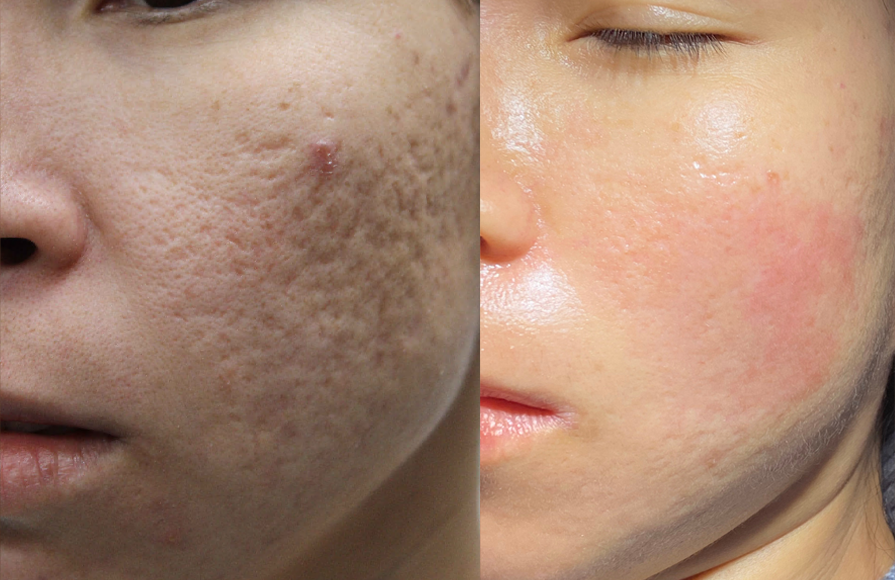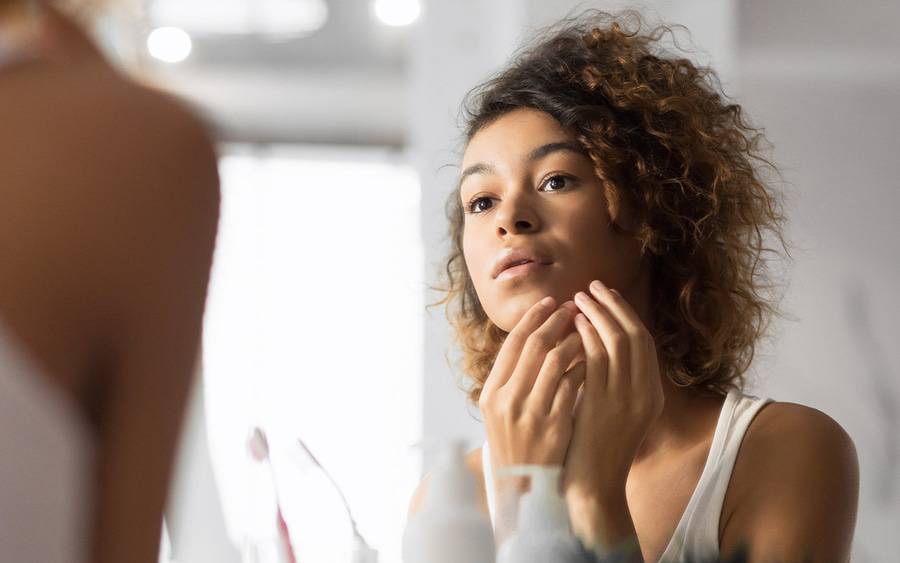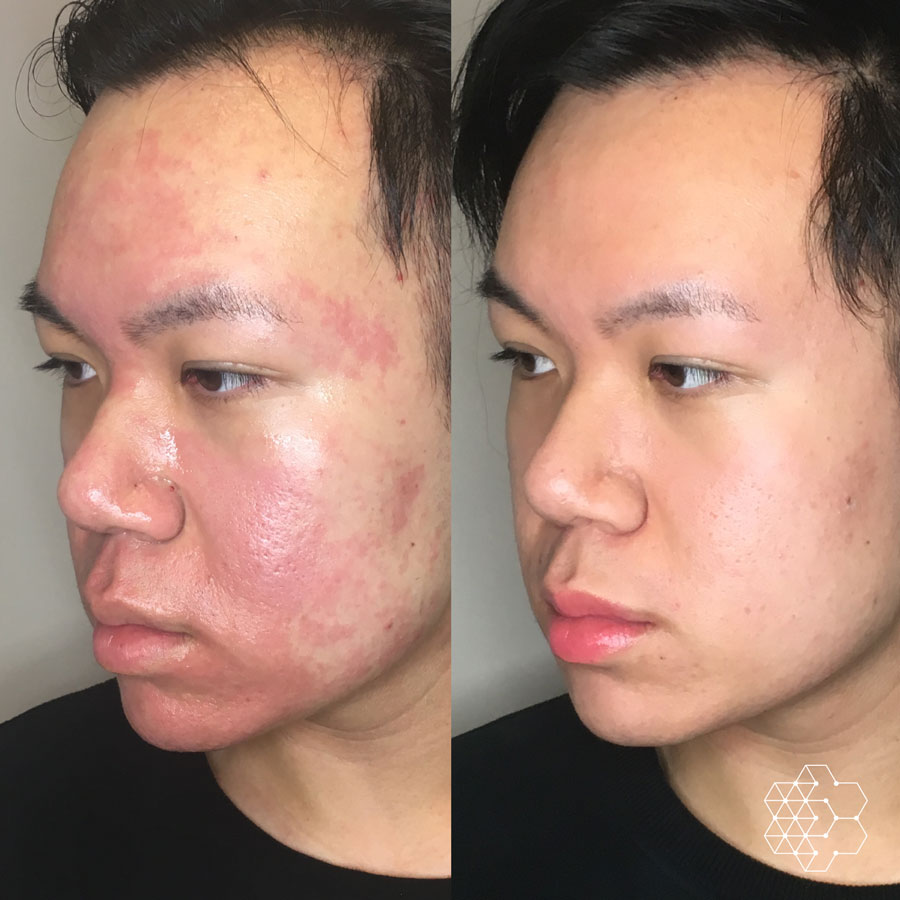Comprehending the Different Skin Problem and Effective Therapy Alternatives for Acne Marks
Acne marks stand for a complicated interaction of skin disease that significantly impact people' self-confidence and general skin health. Comprehending the distinct sorts of acne scars-- atrophic and hypertrophic-- alongside their underlying reasons, is essential for determining efficient treatment methods. Numerous healing options exist, ranging from advanced dermatological treatments to all-natural treatments. The efficacy of these treatments often pivots on personalized evaluations by certified experts. As we discover the landscape of acne mark monitoring, it becomes obvious that the trip towards clearer skin may entail greater than simply topical remedies.
Sorts Of Acne Scars

In contrast, hypertrophic scars arise from an overflow of collagen during the recovery procedure, bring about raised locations on the skin. These marks are usually strong and can differ in color, occasionally appearing red or darker than the bordering skin.
Understanding these kinds of acne marks is essential for creating an efficient therapy plan - acne scars. Choices might consist of chemical peels, laser treatment, microneedling, or dermal fillers, tailored to the particular mark kind. A detailed examination with a skin doctor can aid determine the most ideal intervention, taking right into account the person's skin kind, mark severity, and overall skin wellness
Sources Of Acne Scarring
Scarring happens as an outcome of the body's all-natural healing feedback to swelling and injury triggered by acne lesions. When acne forms, it triggers an inflammatory action, leading to the release of various cytokines and growth factors that promote recovery. This process can sometimes lead to too much cells development or insufficient repair service, resulting in marks.
The primary root causes of acne scarring include the intensity of the acne itself, period of the sores, and private skin types. Serious inflammatory acne, such as nodules and cysts, is more probable to cause scarring because of deeper tissue damages. In addition, incorrect handling of acne lesions, such as picking or pressing, can intensify cells injury and swelling, boosting the probability of scarring.
Genetic tendency also plays a significant duty; people with a family members background of scarring go to a higher risk. Furthermore, skin kind and color can affect mark formation, as darker complexion may experience post-inflammatory hyperpigmentation, while lighter skin might establish atrophic marks.
Eventually, understanding these reasons is essential in taking care of acne and reducing the capacity for scarring.

Treatment Options for Scarring
Reliable therapy alternatives for acne scarring vary depending on the type and extent of the scars. Usually categorized right into atrophic, hypertrophic, and keloid marks, these problems need tailored techniques for ideal outcomes.
For atrophic scars, which are defined by a loss of tissue, therapies such as chemical peels, microdermabrasion, and laser therapy are commonly used. These methods promote skin renewal and boost collagen manufacturing, therefore improving skin texture. Subcision, a minimally invasive treatment, can also be reliable by damaging up coarse bands beneath the skin.
Keloid and hypertrophic scars can be more challenging to treat. Options consist of corticosteroid injections to decrease inflammation and flatten the marks. In many cases, cryotherapy or laser therapy might be advised to decrease their appearance.
Surgical options are offered for serious scarring, where excision or skin grafting might be necessary. It's necessary for people to speak with a dermatologist to evaluate their particular mark kind and review the most ideal treatment plan. Combining Related Site multiple treatments often yields the most effective outcomes, making certain that each client's one-of-a-kind skin problem is attended to efficiently.
Natural Home Remedy and Natural Solutions
Natural services and natural remedy can give an easily accessible approach for people seeking to enhance the appearance of acne marks (acne treatment for sensitive skin). Different ingredients found in the home kitchen have shown possible advantages in boosting skin texture and advertising healing

An additional efficient option is lemon juice, which functions as an all-natural exfoliant and can lighten hyperpigmentation. However, it ought to be made use of cautiously, as it may trigger photosensitivity. Oat meal masks are also useful; their mild exfoliation can help get rid of dead skin cells while calming irritation.
Vital oils, such as tea tree oil and lavender oil, can even more support mark healing because of their antimicrobial homes. It is important to do a spot examination prior to using any treatment to ensure there are no adverse responses. These all-natural services can be a corresponding method in the trip to diminish acne marks.
Protecting Against Future Scarring
Adopting a proactive strategy to skincare can dramatically minimize the danger of establishing future acne scars. Among the key methods is to manage acne efficiently as it occurs. This entails making use of non-comedogenic skincare products and medications recommended by dermatologists that target acne without irritating the skin. Regular cleaning, peeling, and hydration can aid maintain skin health and protect against clogged up pores.
Furthermore, avoiding the temptation to squeeze or pick acne lesions is important, as this can cause swelling and succeeding scarring. Rather, people ought to concentrate on applying topical therapies that promote recovery and minimize swelling. Ingredients such as salicylic acid, benzoyl peroxide, and retinoids are understood for their efficiency in handling acne and reducing marks.
Sunlight security is an additional essential part; direct exposure to UV rays can impede and darken marks healing. Using a broad-spectrum sun block daily can minimize these results.
Lastly, maintaining a healthy and balanced diet rich in anti-oxidants and staying hydrated assistances skin regeneration. By executing these safety nets, individuals can substantially reduce their danger of future scarring and advertise total skin health.
Final Thought
Finally, a detailed understanding of acne marks, including both hypertrophic and atrophic kinds, is important for efficient therapy strategies. Tailored interventions, including specialist therapies and natural remedy, can considerably improve skin appearance and appearance. Preventive measures also play an essential duty in lessening check out this site future scarring. Examination with a skin doctor continues to be important to create customized methods that take into consideration private skin kinds and mark severity, ultimately see this website enhancing the efficacy of scar administration methods.
Acne marks stand for a complicated interplay of skin conditions that dramatically effect individuals' self-esteem and general skin wellness. The 2 main groups of acne marks are atrophic and hypertrophic scars. These scars are more identified right into three subtypes: ice choice scars, which are narrow and deep; boxcar scars, which are bigger and have distinct sides; and rolling scars, which create a wave-like appearance due to uneven skin appearance.
An extensive consultation with a dermatologist can help determine the most ideal treatment, taking right into account the person's skin type, scar severity, and overall skin health.
Appointment with a skin specialist stays vital to devise personalized strategies that think about individual skin kinds and mark seriousness, ultimately improving the efficiency of mark monitoring techniques.